<< Previous | Displaying results 6521-6530 of 6769 for "" | Next >>
Is the “Final Solution” the same as the Holocaust? Did the Nazis always plan to murder the Jews? Learn the answer to these and other questions about the Nazi “Final Solution.”
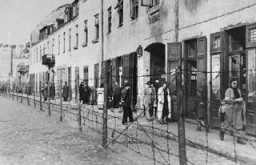
The SS established the Sachsenhausen concentration camp as the principal concentration camp for the Berlin area. Located near Oranienburg, north of Berlin, the Sachsenhausen camp opened on July 12, 1936.
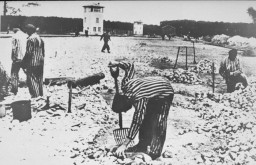
A group of young German boys view Der Stuermer, Die Woche, and other propaganda posters that are posted on a fence in Berlin, Germany, 1937.
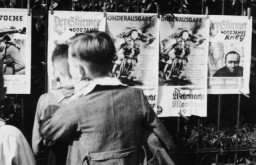
American residents of Japanese ancestry wait with their luggage for transportation during relocation, San Francisco, California, April 6, 1942.
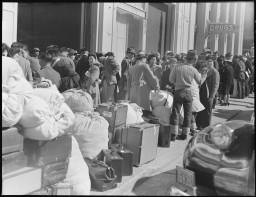
Tatsuro Matsuda, whose family owned the Wanto Co. grocery store, hung this sign in front of the store, Oakland, California, March 1942. The store was closed following orders for the evacuation of Americans of Japanese ancestry. Evacuees were forcibly deported to relocation centers.

Japanese Americans wait in line to register with the War Relocation Authority, San Francisco, California, April 1942. A government agency, the War Relocation Authority was tasked with removing “enemy aliens” from designated zones. Local authorities on the West Coast forced all “persons of Japanese ancestry” to register. They were then deported, first to temporary “assembly centers” and from there to relocation centers.
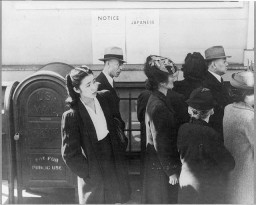
Hilda Rattner (born Hilda Wiener ) was born into a Jewish family in Vienna on June 14, 1904. Not long after her birth, Hilda’s parents realized that she was deaf. Two years later, their fourth child, Richard, was born, and he was also deaf. Vienna in particular had a very vibrant deaf community where Jews and non-Jews mixed freely. Hilda and her brother Richard attended a Jewish school, where they learned to sign, and it was through these associations and activities that Hilda met Isadore Rattner, a…
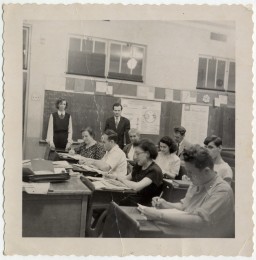
Portrait of Helen Keller, seated, reading Braille. September 1907. In 1933, Nazi students at more than 30 German universities pillaged libraries in search of books they considered to be "un-German." Among the literary and political writings they threw into the flames during the book burning were the works of Helen Keller.
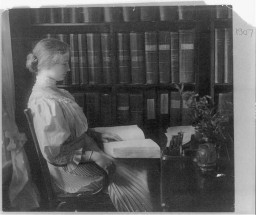
The most notorious of the 189 known interrogation centers in Cambodia was S-21, housed in a former school and now called Tuol Sleng for the hill on which it stands. Between 14,000 and 17,000 prisoners were detained there, often in primitive brick cells built in former classrooms. Only 12 prisoners are believed to have survived.
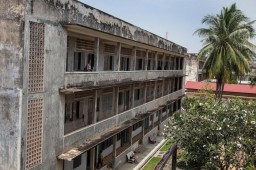
Secretary of Labor Frances Perkins testifies before the House Committee on migrant workers. Washington D.C., December 1940.

We would like to thank Crown Family Philanthropies, Abe and Ida Cooper Foundation, the Claims Conference, EVZ, and BMF for supporting the ongoing work to create content and resources for the Holocaust Encyclopedia. View the list of donor acknowledgement.